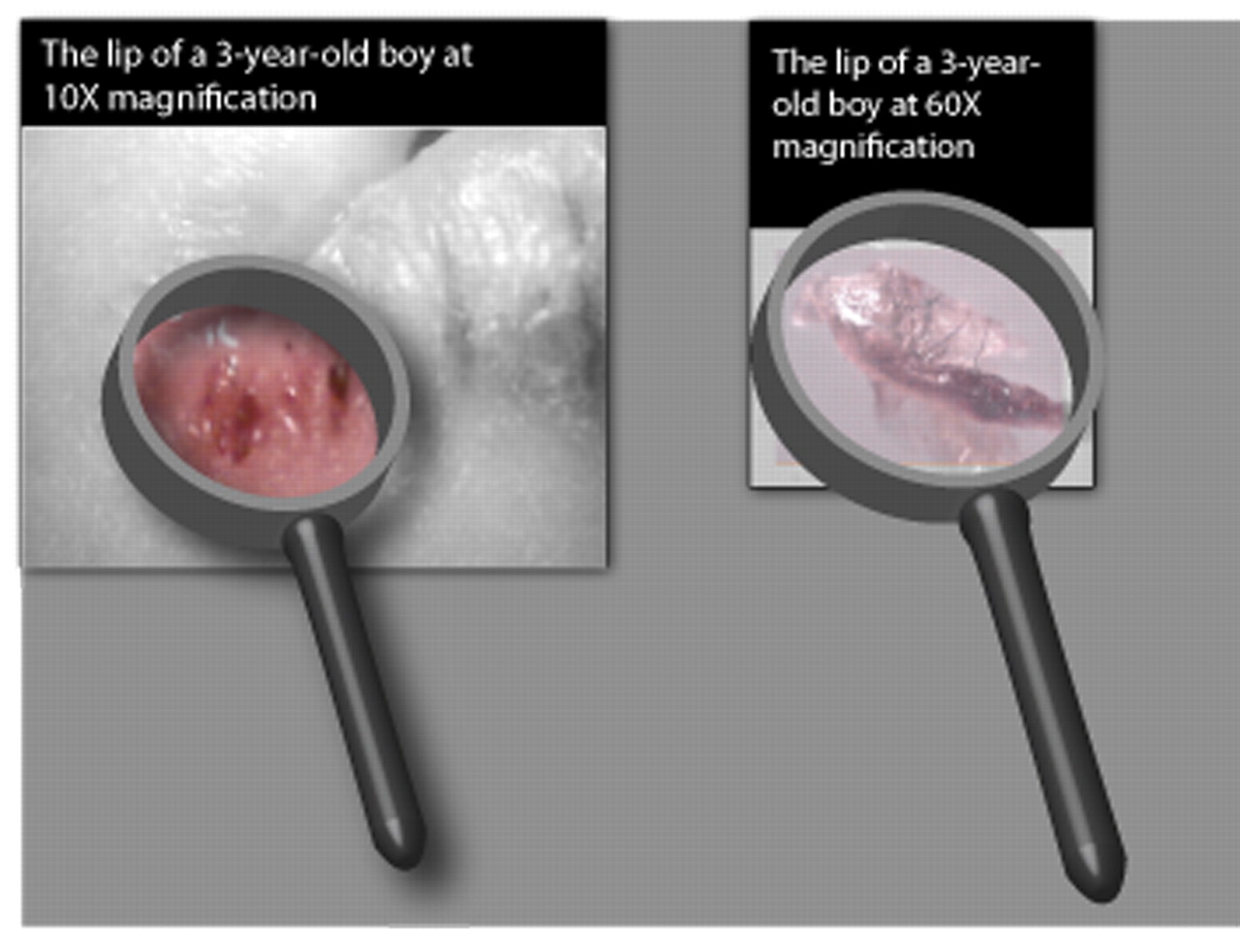Amysterious skin illness whose victims complain of insects invading their skin; crawling, stinging, and biting sensations; and fibers protruding from nonhealing skin lesions is making its way across the United States as well as into other countries. “I would be in bed, and it felt like an army of ants crawling over my body,” one sufferer said.
The illness first came to public attention in 2002, when a woman whose son had the condition named it “morgellons” (after a disease with similar symptoms mentioned in a 16th-century medical text) and created a foundation devoted to finding its cause and cure. Since then, more than 5,000 households have registered at the foundation's Web site. The malady has also received a lot of media coverage, such as from the ABC show “Good Morning America” to the Dallas Observer, Los Angeles Times, San Francisco Chronicle, and New York Times.
Moreover, virtually “every dermatologist in the country” has had contact with morgellons patients, Caroline Koblenzer, M.D., a clinical professor of dermatology at the University of Pennsylvania, told Psychiatric News. For example, she has treated dozens of patients with the condition.
The federal Centers for Disease Control and Prevention in Atlanta is so concerned about the numbers of people said to be suffering from the illness that in June it set up a task force to look for its cause. The task force includes experts in infectious diseases, environmental toxicity, pathology, and psychiatry, said Dan Rutz, the CDC spokesperson for the task force, in an interview. The task force had expected to be up and running by now, Rutz admitted, “but we're just not.... It is just taking a long time to agree on the protocol with this many disciplines represented.”
When can the public expect some results from the task force? “I wouldn't want to hazard a guess,” said Rutz. Meanwhile, various psychiatrists are speculating about the malady's cause or causes.
Lyme Disease a Possible Cause
Lyme disease might be the culprit, Nanette Orman, M.D., an adjunct clinical professor in Stanford University's Department of Psychiatry, theorized during an interview.
“Lyme disease is one of these illnesses that has multiple symptoms—fatigue, depression....[Lyme patients] can have a skin rash, they can have crawling sensations... .So Lyme disease can mimic a lot of other diseases. And it cannot always be confirmed by blood tests.”
However, Tomas Hajek, M.D., Ph.D., an assistant professor of psychiatry at Dalhousie University in Canada, doubts that Lyme disease is the cause of morgellons. He conducted a study in his native Czech Republic that linked Lyme disease to a number of psychiatric illnesses (Psychiatric News, March 15, 2002).
“Until I see carefully controlled, unbiased data, I remain skeptical [about] its infectious etiology or association with Lyme disease,” Hajek told Psychiatric News.
Hajek believes it is more likely that morgellons is delusional parasitosis—a psychiatric disorder that has traditionally been rare and about which not much is known apart from case histories. Katharine Phillips, M.D., a professor of psychiatry at Brown University who has seen a number of patients with delusional parasitosis, concurred.
“My sense is that it seems to overlap a lot with delusional parasitosis. How complete that overlap is, we don't know,” she said.
Another reason to suspect that morgellons is delusional parasitosis is that it often occurs with other psychiatric disorders or with illnesses that have a strong psychological component.
“A past or family history of depression or bipolar disorder is not uncommon,” Koblenzer pointed out. “Chronic fatigue syndrome, fibromyalgia, irritable bowel syndrome, and other somatization disorders crop up repeatedly.”
Restless Legs Not Ruled Out
Jonathan Fleming, M.D., an associate professor of psychiatry at the University of British Columbia in Canada, also believes that morgellons could be delusional parasitosis, he said in an interview at the recent annual meeting of the Canadian Psychiatric Association (CPA) in Toronto. But he stressed that morgellons is not restless legs syndrome. Fleming, who is also co-director of the Sleep Disorders Program at the University of British Columbia Hospital, is an authority on the syndrome.
People sometimes confuse delusional parasitosis with restless legs syndrome because the two conditions sometimes go by the same name—Ekbom's syndrome. Also, they have similar symptoms—say, the sensation of worms crawling under the skin of the legs. An easy way to distinguish whether the crawling sensation is due to delusional parasitosis or restless legs syndrome is to move the leg and see if the sensation goes away, he pointed out at a CPA meeting workshop on the syndrome. If it does go away, it's restless legs syndrome, not delusional parasitosis.
Koblenzer, who is a psychoanalyst and a dermatologist, proposed another possibility—that morgellons and delusional parasitosis are identical, but that they are more than mere delusion.
“Unfortunately, since we do not know the cause of the symptoms. .there are differences of opinion as to how to approach these unfortunate patients,” she said. “Many dermatologists feel that it is `all in your head' or `imaginary' and tend to dismiss the patient. Others, of which I am one, believe that there is indeed an altered sensation in the skin, probably triggered by neuropeptide release, usually associated with stress of some kind or depression, which the patient interprets in terms of parasitic infestation; that is, the basic change is in the skin, and this must be addressed appropriately, in addition to treating the thought disorder.”
Collusion in Delusion
Yet another intriguing scenario is that morgellons is not only a delusional parasitosis, but a delusional parasitosis that can be shared by more than one person—or what the French back in the 19th century named folie à deux (psychosis for two), folie à trois (psychosis for three), or however many people are involved.
“I read one report where 12 percent of cases of delusions of parasitosis have folie à deux,” William Meehan, M.D., Ph.D., told Psychiatric News. “So it seems to be pretty common.”
Meehan, who is a second-year resident in adult psychiatry at the University of Massachusetts, has had some exposure to delusional parasitosis patients.
“There have been cases of delusional parasitosis in which several people in the same family have sort of bought into the notion that there is an infestation,” Gerard Gallucci, M.D., said in an interview. “I [also] remember reading about someone who appeared at the vet because they believed that they and their pets were infested.”
Gallucci, medical director of Delaware Health and Social Services' Division of Substance Abuse and Mental Health, has treated a few patients with delusional parasitotis. In fact, as of last month, some 200,000 Web sites were devoted to morgellons disease. “The Internet might be a vehicle for propagating” the illness, he speculated.
“Most of what I have read about morgellons disease suggests that it is a disease that has been generated online,” Meehan agreed.
Regardless of the origin or origins of morgellons, “these patients really suffer,” koblenzer asserted. “The symptoms literally take over the life of the patient, consuming not only the patient's time, but also the patient's financial resources. I have known patients who have literally disposed of all upholstered furniture and much clothing (one patient included a $10,000 mink coat, which she burned). Grandmothers will not touch their grandchildren for fear of contamination and similar tragic situations.”
Also compounding the distress of these patients, Koblenzer pointed out, is that most dermatologists do not feel comfortable treating them.
There is some good news for morgellons sufferers, however: Some treatments have been found, on a case-by-case basis, to help them—steroid creams, antibiotics, antidepressants, and, most crucially, low doses of antipsychotic medications such as olanzapine and pimozide. Meehan and colleagues reported in the March Archives of Dermatology, in an article titled“ Successful Treatment of Delusions of Parasitosis With Olanzapine,” that they favored olanzapine over pimozide because olanzapine has a safer adverse-effect profile.
But in the October Archives of Dermatology, in a letter titled“ Pimozide at Least as Safe and Perhaps More Effective Than Olanzapine for Treatment of Morgellons Disease,” Koblenzer wrote that Meehan and coworkers failed “to mention a very strong point in favor of pimozide—its powerful antipruritic action, [which is] believed to be due to its effect on opioid pathways.” Also, “the adverse-effect profile of olanzapine does not seem significantly more benign than that of pimozide.” Nonetheless, “because effective doses of both drugs are low,” she concluded, “significant adverse effects are unlikely in either case, though the weight gain with olanzapine is unacceptable to many patients.”

